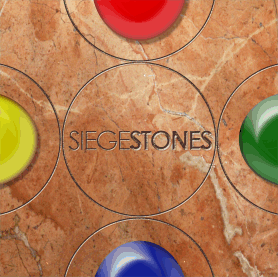
By Aaron Bradford Starr
Most students are taught to dislike math. Yes, taught. Many young children develop a noticeable bias against math as soon as they enter school. Where this bad reputation comes from is not as important as the problems it causes in getting the students to learn the skills they’ll need. Grudging students are not as motivated as interested ones. So, how to interest students in math? Go back to how the mathematicians from the past intrigued their own students. Play games.
The idea of using board games to teach is ancient. Nobles used games to teach their sons strategic thinking and tactical ability, while philosophers saw the value of games in training awareness and insight. There was a broad acceptance that games trained the brain, and they were held in high esteem.
But for the last century or so, the concept of the “Educational Game” has been that the game should directly teach a particular skill or set of facts. These “games” are, in fact, often nothing more than glorified tables and charts, or tests and worksheets given one question at a time. Students sense this. They know the feel of a worksheet, even if it’s printed on cardstock in bright colors. While better then doing rote memorization, they have none of the qualities of a game: an interesting and evolving situation requiring forethought and choice. In short, they aren’t fun.
A real game, on the other hand, has numerous advantages, and almost none of the disadvantages of a traditional educational game. Real games are designed to be enjoyable first and foremost. Peoplevolunteer their time to play them. How many groups of kids spontaneously break out the flash cards on the weekend? Any?
Mathematicians have, throughout history, used games -both physical and mental- to stimulate the sort of creative thinking needed for math. Nowadays we use the term “lateral thinking”, but it boils down to the same thing: being presented a situation, and seeing it in a way that is clever, new, and, most importantly, valid. Since games by definition have rules, they validate themselves.
The skills that real games require are many, some being so fundamental that they seem to go without saying, but these skills form the basis of learning itself, and aid learning math in particular. Taking just the basic SiegeStones game, we can list a number of core skills that will help math students.
First off, real games have rules. While this seems obvious, the fact is that in order to learn and play a game, people have to practice the skill of learning, and applying what they know of the rules to an evolving situation.
Nobody can deny that this is exactly what a math teacher is trying to do: convey the rules that control how to solve the problem at hand. When math is conveyed as the rules to puzzles and games of different kinds. If the student knows that when their teacher says game, they mean something actually involving fun, they'll pay more attention. And Siege Stones is undeniably a "real game" that people actually play outside of classrooms.
This is how games help develop “patterns of process”. The player will begin to recognize strategies that help them capture towers along the edge, for example, or towers in the middle space. These strategies are systems of changing the situation from looking like itdoes, to looking how youwant it to look. And isn’t that what math problems are? In the real world (and in higher math) the challenge is often recognizing which math skill is needed for the problem at hand, and that’s an ability SiegeStones can help build and develop.
When players start to plan two, three, or even more moves ahead, and think strategically, they’re tackling dynamic problem solving. They know they have an opponent, who can do unpredictable things, and must keep in mind a vague cloud of potential actions. Math problems, on the other hand, also seem to do unpredictable things, and the ability to recognize and handle that situation is important. Is the unexpected result a matter of student error? If so, where?
Perhaps more than any other subject, math frustrates students. By linking the process of solving math problems to the problem of how to achieve some goal in a game, math teachers can change the way in which students think of the math that challenges them. The transformation from bitter frustration to intrigue can be helped by playing games. But how?
First off, explain the rules to the students as a group, preferably with each student having their own copy of the rules. The rules sheet will help in conveying the basics as simply as possible. Organize the students into groups, and have them play a few games, to get a feel for how the game works. 4-player games are most economical, of course, but, if possible, have players play 3 and 2-players games as well, to see how that changes their strategies.
Once the students have a firm grasp of the rules, build questions around the gameplay in the form of puzzles, and see if students can answer them. Some possibilities are:
All of these examples could be extended to situations involving different player numbers, or other variable, and the students can try to figure out why this would change the outcome.
This is a great way to introduce the concept of analysis, and the students won’t groan the way they do about traditional “story problems”, which were meant to do the same thing. The puzzles all require not just arithmetic skills, but mathematical ones of a deeper nature. The students have a problem presented to them, and can solve it as they wish. But the best part? No matter what strategy they choose, they’ll need to use math to answer these questions, even if they don’t realize it.
Just like most math in the “real world”.

Looking for more ways to use our games in the classroom? See our Teacher's Guide!